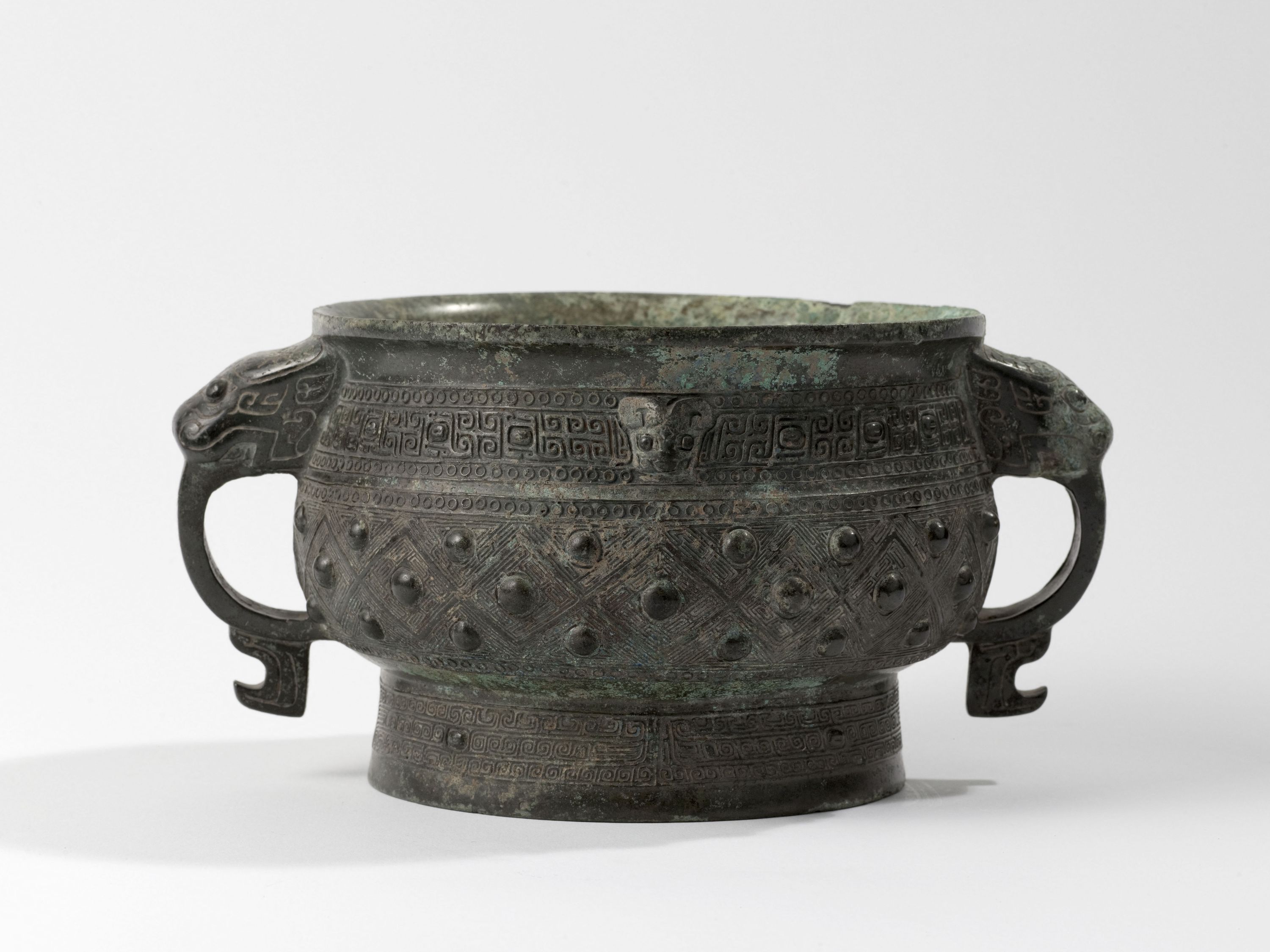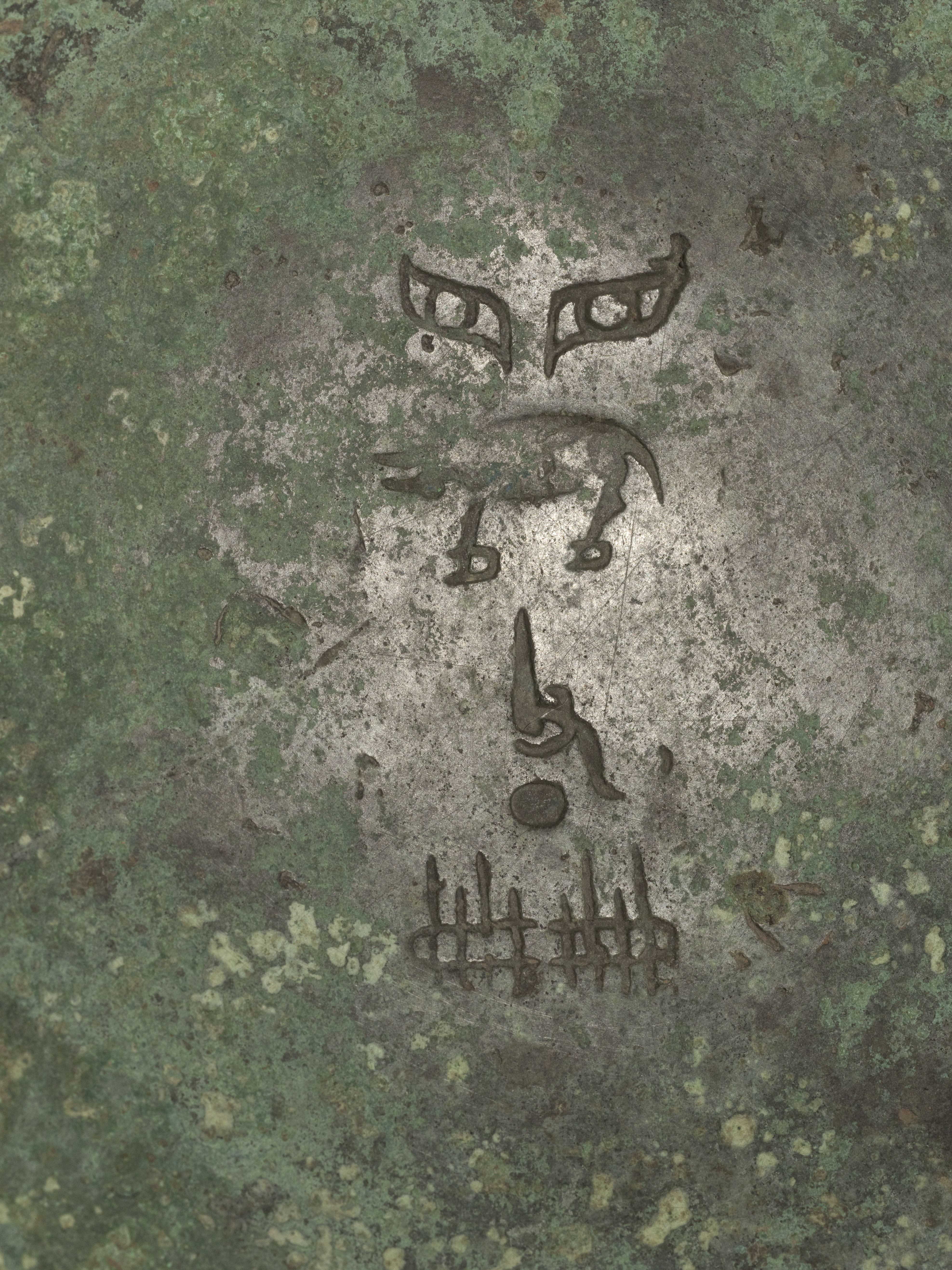
Vase gui 簋
Bronze, Fonte, Fonte au moule
Vaisselle et ustensile de cuisine, Vase, Coupe (récipient), Objet religieux
Achat
M.C. 8759
Inscription: For the investiture of Ding, father of the Shi clan Gui are vessels used to contain cereals in grain form, rice, millet or sorghum. Sometimes with handles, they have a bowl-shaped body of various sizes, and a ring base. They have been recorded in tombs dating from the Erligang period (circa 1550-circa 1300 BC), were common in the Anyang period (circa 1300-circa 1050 BC) and widespread in the Western Zhou era (circa 1050-771 BC).
The example described here is representative of this group. The belly is covered with a decoration of diamonds containing quadrangular spirals. Each has a protruding button in its centre.
The neck band is a series of stylised animal motifs reduced to a pair of eyes with narrow pupils, separated by groups of complex spirals. On either side of the bowl, this frieze features the head of a ram with curved horns. The upper part of each of the two handles takes the form of an ox mask. They end in an out-turned hook.
